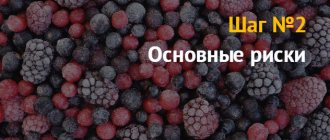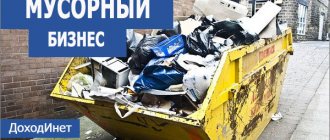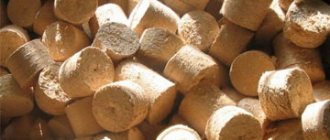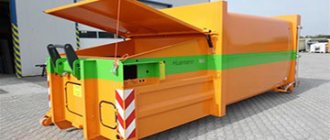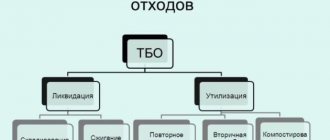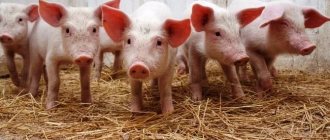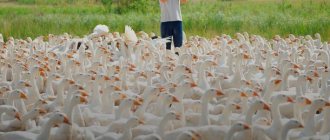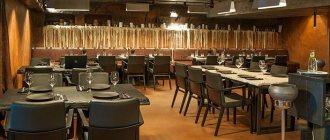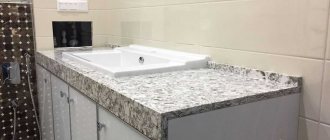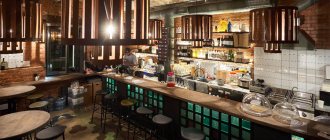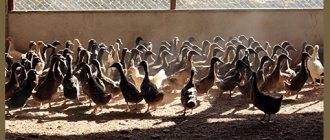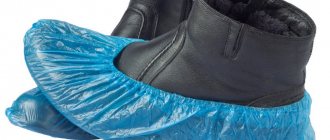It is very difficult to find a material used in construction other than crushed stone. Since crushed stone is used when laying foundations for buildings, in road construction and is the basis for the production of concrete. Therefore, if there are abandoned granite quarries in your area, then it makes sense to open your own business producing a popular building material - crushed stone.
Of course, this type of business requires large investments, but it will generate regular income.
Features of registering a crushed stone production enterprise
To legalize a business, you need to register an individual entrepreneurship or open an LLC. If at the first stages you plan to produce small volumes of building material, then it would be advisable to register an individual entrepreneur. This procedure does not require a lot of time and money.
The best taxation system is a simplified taxation system, 15% of profits. To switch to this system, you must submit an application within 3 days after registering an individual entrepreneur about your desire to switch from the general taxation system to the simplified taxation system.
Features of organizational and legal activities:
- Obtaining a license for the extraction of stone rubble from a quarry;
- Development of design documentation for the use of the quarry and its protection in Rostechnadzor;
- Obtaining technical specifications;
In the process of organizing an enterprise, the following OKVED and OKP codes may be needed:
- 14.21 – “Development of gravel and sand quarries”;
- OKP code 57 1101 – gravel and crushed stone from natural stone and sand and gravel materials;
Also, in the process of organizing your own business in Russia, you need to familiarize yourself with the regulatory documents:
- GOST 8267-93 – “Crushed stone and gravel from dense rocks for construction work. Technical conditions".
- GOST 8269.0-97, GOST 22856-89, GOST 26644-85, GOST 25226-96, GOST 7392-2002, GOST 18866-93.
These documents are very liberal and allow the production of crushed stone from various rocks, even from construction waste - this type is called secondary crushed stone.
Business organization
Before registering an enterprise and purchasing equipment, it is necessary to take into account the specifics of raw material extraction. The most common option is to develop a quarry yourself and then process the rock. However, stone deposits are unevenly distributed across regions.
If the reserves are large enough, then the most effective production option is to create a stationary plant. In this case, you can purchase cheaper and more productive equipment, but subsequently transporting it to a new field will be quite expensive.
If there are many small deposits of stone in the region or construction waste is used as raw material, then purchasing a mobile fleet of equipment will be more effective. Its cost is higher, but it makes it possible to transport the plant directly to the place of extraction of materials at minimal cost.
It is also necessary to take into account the seasonality of production. Demand for crushed stone in winter, depending on the region, can decrease by more than 60%. Therefore, to increase profitability, it is better to open a plant in the spring.
Enterprise registration
For small volumes of crushed stone production, the easiest way is to register an LLC using the simplified tax system “Income minus expenses.” The second option is preferable, as it makes it easier to conclude contracts with large customers. However, if the limit of 150 million rubles is exceeded. annual income, it is worth considering other tax options. Required OKVED codes:
- 08.12.1 “Development of gravel and sand quarries” - includes the production of crushed stone.
- 46.73 “Wholesale trade in timber, building materials and sanitary equipment” - necessary for the sale of products.
- 38.21 “Processing and disposal of non-hazardous waste” is a code suitable for the production of recycled crushed stone from construction waste.
No special certification is required, while GOSTs 22263-76, 3344-83, 22856-89, 26644-85, 8267-93, 18866-93, 5578-94, 25226-96, 8269.0-97, 8269.1-97, 7392- 2002 impose minimum requirements for product quality.
Plans for the development of mining operations of common minerals, developed by opencast mining without the use of blasting, are subject to approval by the Federal Service for Environmental, Technological and Nuclear Supervision.
Starting investments
The equipment of the plant may vary depending on the budget and production goals. One of the most versatile options includes:
- Vibrating feeder. It allows not only to feed rock, but also to screen out small fractions to reduce the load on the crusher. However, a cheaper option is tape.
- Crushers. The jaw type is suitable for primary processing of the rock. To obtain fractions of 40-70 mm, a rotary one is used, for 3-20 mm, a conical one is used. To reduce flakiness (the number of needle and plate fractions) and produce cube-shaped crushed stone, rotary centrifugal crushers are used.
- Bolt. The most common in the CIS countries is the 3-sieve screen. However, for better sorting it is better to use cascade options from foreign manufacturers.
Taking into account the purchase of the necessary equipment, the creation of a stationary plant for the production of crushed stone will require capital investments in the amount of:
| Name | Cost, rub. |
| Crushing and screening complex EC | 20000000 |
| Excavator Komatsu PC1250-7 | 25000000 |
| Front loader Komatsu WA470-3 | 9000000 |
| Bulldozer Komatsu D-155 | 8500000 |
| Caterpillar 772 mining dump truck | 5000000 |
| Dump truck KAMAZ-65115-044-62 | 2000000 |
| Onboard vehicle KAMAZ-65117 | 1500000 |
| Hyundai bus | 750000 |
| Fuel tanker MAZ 6303 | 600000 |
| Passenger car UAZ "Patriot" | 500000 |
| Total | 72850000 |
You can reduce your start-up investment by purchasing used equipment or using rented equipment. However, this will increase monthly costs, including repairs.
The cost of renting a quarry is about 5,000,000 rubles. per month. It is also necessary to construct a hangar for parking and servicing equipment - about 1,000,000 rubles. In total, to create production, taking into account the costs of advertising and registration of the enterprise, about 80,000,000 rubles will be required.
Monthly expenses
Taking into account the specifics of production, the main costs, in addition to renting a quarry, will include wages, spare parts and fuels and lubricants. To maintain the operation of the plant with a 2-shift schedule, a team of:
| Job title | Salary, rub. | Quantity | Salary, rub. |
| Shift foreman (engineer) | 50000 | 2 | 100000 |
| Accountant | 40000 | 1 | 40000 |
| Sales Manager | 20000 | 2 | 40000 |
| Storekeeper | 30000 | 2 | 60000 |
| Technician | 40000 | 4 | 80000 |
| Drivers | 40000 | 18 | 720000 |
| Handyman | 25000 | 20 | 500000 |
| Payroll | 1540000 | ||
According to standard technical calculations, the cost of spare parts is calculated as 4% per year, which per month will be: 72850000 x 0.04/12 = 242833.3 rubles. Approximate consumption of fuel and lubricants for the specified fleet of equipment:
| Name | Consumption per month, l. | Average market price per liter, rub. | Monthly cost, rub. |
| Diesel fuel | 170183 | 35 | 5956405 |
| Lubricants | 12442 | 30 | 373260 |
| Total | 6329665 | ||
The actual extraction of stone will incur additional costs in the form of the cost of drilling and blasting operations. With a conventional mining and processing rate of 150 m3/h, 52,800 m3 of stone will be mined per month. At a cost of blasting of 40 rubles/m3, the costs will be: 52800x40= 2112000 rubles.
Russia also has a mineral extraction tax of 5.5%. With the indicated volumes of stone quarry production per month, its size will be about 1,000,000 rubles. In general, the costs of maintaining production will be:
| Name | Cost, rub. |
| Payroll | 1540000 |
| Quarry rental | 5000000 |
| Drilling and blasting works | 2112000 |
| MET | 1000000 |
| Costs for fuel and lubricants | 6329665 |
| other expenses | 500000 |
| Total | 16481665 |
Revenues and payback
Taking into account the peculiarities of production, the plant will produce 3 types of goods, each of which can be sold on the market:
| Name | Percentage of production volume | Monthly production volume, m3 | Cost per cubic meter, rub. | Income, rub. |
| Crushing screening | 25% | 13200 | 150 | 1980000 |
| Crushed stone of various fractions | 65% | 34320 | 500 | 17160000 |
| Rubble stone | 10% | 5280 | 800 | 4224000 |
| Total | 23364000 | |||
However, this is only a theoretical amount. Taking into account possible losses, unpaid bills and other things, it is worth calculating a lower profitability. Assuming 90% of sales, the profit from the enterprise for the month will be:
| Crushed stone, rubble and screenings produced, m3 | 52800 |
| Current costs, rub. | 16481665 |
| Monthly income (90%), rub. | 21027600 |
| Profit before tax, rub. | 4545935 |
| Tax (USN 15%), rub. | 681890,25 |
| Net profit, rub. | 3864044,75 |
The expected return on the initial investment in the enterprise is approximately 1.5 years. However, taking into account seasonal price dynamics, the actual period is closer to 2 years. This process can be accelerated by concluding contracts with large customers or creating additional production based on manufactured materials.
Rate this page: 2 ratings, average: 4.00
- #: Business for men
- Production
- Construction materials
Crushed stone production technology
The technological flow diagram for the production of crushed stone is shown below.
The crushed stone production process includes two stages - the extraction of rubble and its processing.
Through blasting, the monoliths are separated from the massif. And then, using special equipment, they are split into small stones, which are transported to the crushing and screening area.
Processing of stone rubble includes the following stages:
1. Primary crushing - at this stage, the stone rubble is loaded into the feeder hopper, where the rock mass is uniformly supplied to the primary crusher. The crusher crushes the rock into medium-sized pieces.
2. Secondary crushing - crushed rubble is supplied to the secondary crusher using a belt conveyor. There the rock mass is crushed into smaller pieces.
3. Sorting of crushed mass - the crushed mass is fed to a screen, where it is sorted into marketable fractions. With the help of external belt conveyors, all fractions of crushed stone are stored separately.
Crushing equipment for crushed stone
To get a better idea of the price scale, you need to look at certain numbers. Let's consider the cost of crushers for the production of medium-capacity crushed stone (up to 130 tons per hour) of various types.
One of the cheapest options is a jaw crusher for crushed stone. Its price is approximately 420,000 rubles. The principle of operation is bending, crushing and abrading the rock between two “cheeks”. But despite all the unpretentiousness and primitiveness of this machine, its simplicity and cheapness also has a downside, especially in the production of large volumes.
After all, the swinging plate soon wears out, so it is swapped with the stationary one. Then the two “cheeks” undergo a restoration process using hard alloy surfacing. These wearing parts require the availability of spare parts or sufficiently long breaks in operation. However, for small industries this option is often optimal.
The next common type of machine in crushed stone production is impact crushers. Their price ranges from 1,950,000 to 2,450,000 rubles. They work on the principle of crushing raw materials using a powerful rotary motor. This crusher for crushed stone is unpretentious in operation. However, over time, it needs maintenance, which consists of rewinding the rotor (electric motor) wire.
A centrifugal impact crusher (priced at approximately 255,000 rubles) is well suited for the main (or accompanying) production of fine crushed stone in accordance with GOST-3344-83.
It can be used as an additional equipment that creates raw materials for enterprises producing high-quality concrete and asphalt. Of course, this crushing equipment for crushed stone allows you to produce larger material.
However, it is irrational to use it this way, because it was originally intended specifically for the small fraction.
Cone crushers are expensive. Their operating principle is quite simple. It consists in the fact that the material is crushed in the layer between the fixed and movable cones. The price of this equipment depends on the country of origin and ranges from 2,300,000 to 4,100,000 rubles.
This high cost depends on their versatility. Cone crushers produce crushed stone of various fractions up to the production of artificial sand. This confirms their versatility.
The prices of mobile crushing plants, as already mentioned, will be completely different. Samples with a productivity of up to 60 tons per hour (that is, half as much as stationary ones) will cost from 7,200,000 to 8,800,000 rubles, depending on the company and country of origin.
Features of the production of colored crushed stone
The technology for producing colored crushed stone is shown in the figure below.
To produce colored crushed stone, fractions of a certain size are selected. Usually crushed stone larger than 10 mm is used. As a result of sorting, dirt and debris are eliminated. Next, the crushed stone, which has already been sorted, enters a concrete mixer and is filled with paint of a certain color. The volume of paint should be 20% of the volume of crushed stone.
Next, the material is mixed for 40-60 minutes. Upon completion of this operation, all crushed stone is covered with colored paint.
To save paint, crushed stone must be removed above the receiving hopper using a metal mesh. This hopper will hold excess paint, which can be used for repainting.
Finally, the painted crushed stone is dried. To produce decorative crushed stone in large volumes, it is best to dry it using a special chamber or hopper. However, this equipment is not cheap, so in the first stages of business, you can dry crushed stone in the open air.
Recycling construction waste: is it profitable to produce recycled crushed stone?
Every year, during construction work, a huge amount of construction waste is generated. These can be pieces of concrete, bricks, construction waste from dismantling old structures. Tons of rusty reinforced concrete structures clutter construction sites. Articles about the removal and disposal of household and construction waste are collected on the website vivozkamusora.ru. But construction concrete waste can be recycled into recycled crushed stone. In Russia, they produce expensive granite crushed stone and cheap secondary crushed stone from construction waste. Its production requires almost eight times less electricity, so the cost of recycled crushed stone is much lower. It is used in the construction of foundations, landscaping work on territory development, and the creation of temporary roads.
About a million tons of construction waste are removed annually from the Russian capital alone. Almost a tenth of construction waste goes to specialized enterprises for recycling into crushed stone. As a rule, these are old reinforced concrete structures. They are processed using special crushing and screening equipment. In Moscow alone, there are more than 500 enterprises for various processing of construction waste.
Recycled crushed stone produced from concrete construction waste has characteristics no worse than crushed stone produced from ore material. Its cost is cheaper than natural crushed stone, since energy costs are much lower. Such production is economically profitable.
Construction crushed stone is produced in two ways
:
1. Rocks are mined in quarries. Then they are transported by special transport to railway stations and loaded into wagons. As a rule, a quarrying company must have its own fleet of expensive freight cars. The production of crushed stone from rocks requires the use of expensive equipment and qualified specialists. Therefore, its cost is high.
2. It is more profitable and cheaper to produce secondary crushed stone from construction waste. At special enterprises, construction concrete waste is sorted and then crushed using crushing equipment. This is how you get cheap secondary crushed stone.
At enterprises for the production of secondary crushed stone, mobile crushing complexes on tracked bases are used. This type of equipment processes concrete, brick construction waste, and old reinforced concrete structures. Additionally, special sorting complexes are used (they are called “screens”), which make it possible to separate secondary crushed stone into fractions. Pieces of crushed stone are up to 120 mm. Dividing them into fractions, crushed stone with sizes up to 15 mm, 15-30 mm, and so on is sorted separately. Recycled crushed stone is successfully used in creating bases for floors, constructing foundations, constructing drainage systems, for covering roads before laying asphalt, in arranging parking lots, garages, and sidewalk paths.
The main advantage of recycled crushed stone is its low price compared to granite. In addition to the crushing and screening complex, enterprises use hydraulic hammers, concrete grinders, milling cutters, grabs, and hydraulic shears to crush construction waste into smaller pieces. Excavators are used to supply waste for crushing. Special hydraulic full-rotary shears perfectly cut reinforcement, concrete, capture, and transport construction waste during the production of secondary construction crushed stone.
The organization of recycling construction waste should be decided at the state level. In Europe, more than 90% of construction waste is completely recycled. Ours is no more than 10%. But there are more and more companies that have appreciated the benefits of recycling construction waste.
Equipment for the production of crushed stone
Feeders
Enterprises can use two types of this equipment - vibration and plate .
An apron feeder is a looped blade that consists of plates that are hingedly connected to each other. The stone quarry moves along a canvas moving in a circle.
Vibrating feeders are new generation equipment. It has a number of advantages compared to apron feeders. This equipment carries out directional and reciprocating movements using an electromagnetic vibrator.
Crushers
There are jaw, cone and centrifugal crushers. Jaw crushers are usually used for primary crushing. Regardless of the technical characteristics and model, crushing of stone rubble in jaw crushers occurs as a result of crushing pieces between two jaws. One of them is fixedly fixed on the crusher frame, and the second is located on the pendulum. This equipment crushes stones 4-8 times.
Other types of crushers are used for crushing rock mass and secondary crushing.
Screens
Inertial screens are used to separate crushed stone into fractions. This equipment is equipped with a vibrator that is activated by an electric motor. Under the influence of a vibrator, the box performs circular movements.
All crushed stone is fed onto a sieve, where, thanks to the oscillations of the box and the inclined installation, it is transported to unloading, sifting through the holes. There may be two or more sieves on the screen.
For maximum efficiency, all crushed stone production line equipment must operate at maximum efficiency.
Working staff
Depending on what equipment is used in production, maintenance personnel are recruited.
When producing crushed stone using a mobile crusher, it is necessary to hire a process engineer with a specialty in “Open-pit mining” - 130403 according to OKSO (technological complexes and mechanical equipment of enterprises or production of building materials, structures and products: 270101, 270106). Two auxiliary workers will work under his leadership. One of them may be a truck driver of the corresponding category, since the equipment is installed on a truck chassis.
When producing crushed stone using stationary equipment, a workshop foreman with one of the engineering specialties listed above and auxiliary workers are hired who will have to control the flow of raw materials and the unloading of bins where the finished product is accumulated in order to avoid interruptions in work. One auxiliary can service one crusher.
Regardless of what equipment is used, when crushing blocks, hired explosive technicians will be required (“Explosive Business” - 130408 according to OKSO) - third-party or in-house.
Business plan for crushed stone production
Let us consider the features of organizing a plant for the extraction of rock and its processing into crushed stone.
Equipment purchase costs
To extract stone quarry, the following special equipment is required:
1. Hydraulic mining excavator Komatsu PC1250-7 with a bucket capacity of 6.5 m3. Price – 25,390,000 rubles;
2. Komatsu D-155 bulldozer. Price – 8,400,000 rubles;
3. Komatsu WA470-3 front loader . Price – 10,000,000 rubles.
The fleet of transport workshop equipment should include:
1. Caterpillar 772 mining dump truck – 5,000,000 rubles;
2. KAMAZ-65115-044-62 dump truck, the carrying capacity of which is 15 tons. Cost – 2,180,000 rubles;
3. Onboard vehicle KAMAZ-65117. Price - 1,500,000 rubles;
4. Hyundai bus with 25 seats. Average cost – 18,000,000 rubles;
5. Fuel tanker. Price – 500,000 rubles;
6. Passenger car UAZ “Patriot”. Average cost - 499,000 rubles;
7. Mobile semi-automatic welding machine. Price – 200,000 rubles.
We plan to process the rock into crushed stone at the crushing and screening site. This will allow the production of building material directly near the working area of the quarry.
The crushing and screening area should include the following equipment:
1. Self-propelled hydraulic hammer. Price – 7,200,000 rubles;
2. Self-propelled jaw crusher. Average cost – 18,000,000 rubles;
3. Self-propelled impact crusher. Price 24,600,000 rubles;
4. Self-propelled screen manufactured by METSO MINERALS. The average cost is 8,531,000 rubles.
The main requirement for this site is that the average productivity of rock processing should be more than 110 m3/hour. The design of the above installations does not require the construction of shelters in the form of buildings or sheltered galleries. This allows you to reduce capital costs. Total capital investments will amount to 130 million rubles.
Revenue from production activities
The production capacity of the designed plant should extract and process about 600 thousand m3 of rock per year.
In this project the following product output is predicted:
- Crushing screening (0-5 mm) – 27%;
- Crushed stone fraction (5-20 mm) – 32%;
- Crushed stone fraction (20-40 mm) – 25%;
- Crushed stone fraction (40-70 mm) – 8%;
- Rubble stone – 8%.
Annual crushed stone production plan:
- Screening of fine fractions – 166800 m3;
- Crushed stone M 600 (5-20 mm) – 188400 m3;
- Crushed stone M 600 (20-40 mm) – 151800 m3;
- Crushed stone M 600 (40-70 mm) – 42600 m3;
- Rubble stone – 50400 m3.
Revenue for the year will be (volumes of fractions multiplied by average price):
- Screening of fine fractions - 166,800 m3 * 140.8 rubles/m3 = 23,485,440 rubles;
- Crushed stone (5-20 mm) – 188,400 m3 * 463, 1 rub./m3 = 87,248,040 rubles;
- Crushed stone (20-40 mm) – 151,800 m3*426.2 rubles/m3 = 64697160 rubles;
- Crushed stone (40-70 mm) – 42,600 m3 * 445.4 rub./m3 = 18,974,040 rubles;
- Rubble stone - 50400 m3 * 360.6 rubles / m3 = 18174240 rubles.
Thus, annual revenue excluding VAT will be 212,578,920 rubles.
Expenditure part of the business plan
Salary
To calculate labor costs, we use the following data:
- Number of working days per year – 329 days;
- Work schedule – 5 working days and 2 days off;
- 2 shifts per day;
- Shift duration is 8 hours.
The staffing schedule was developed in accordance with expert assessments of the needs of each production stage and established industry standards. The total number of personnel for the plant is 54 people, of which 48 are key workers, 6 are administrative personnel.
Total monthly wage costs will be 1,600,000 rubles, of which:
- Production personnel – 1,310,000 rubles per month;
- Administrative staff – 290,000 rubles per month. The rate of insurance premiums as of January 1, 2013 is 30% of the total wage fund.
Based on this, the total amount of labor costs for 12 months will be: 1,600,000 * 1.3 * 12 = 24 million 960 thousand rubles.
Costs for auxiliary materials and spare parts
Costs for spare parts are taken as 4% of the cost of equipment. 69,870 thousand rubles * 0.04 = 2,794,800 rubles
Costs of fuels and lubricants: The total consumption of diesel fuel for the operation of a diesel engine, an excavator, a front-end loader, a bulldozer, a diesel generator and a fuel tanker is 1,438.5 thousand liters per year.
Lubricant consumption – 106.4 thousand liters (kg) per year.
Fuel consumption for a Caterpillar dump truck:
- Diesel fuel – 603.7 thousand liters (kg) per year;
- Lubricants – 42.9 thousand liters (kg) per year.
Let's assume the truck utilization rate is 0.5.
The average cost of diesel fuel is 25 rubles/liter;
The average cost of lubricants is 19.6 rubles/liter.
Taking into account these data, the cost of maintaining and operating a mining dump truck will amount to 7,966,670.00 rubles per year.
Costs for fuels and lubricants for other special equipment will amount to 38,047,940.00 rubles
Depreciation deductions
The percentage of depreciation of capital equipment is 16%. 68,500,000 * 0.16 = 10,960,000.00 rubles
Indirect costs
Total costs for drilling and blasting operations for the year – 600,000 (design capacity of the quarry) * 36 rubles/m3 (average cost of drilling and blasting operations) = 21,600,000 rubles
Diesel fuel consumption for operating auxiliary equipment – 19.8 thousand liters per year
Consumption of lubricants for the maintenance of auxiliary equipment – 0.5 thousand liters per year
The utilization rate of this technique is 0.3
It follows that the cost of fuel and lubricants is: (19,800 * 25 + 500 * 19.6) × 0.3 = 151,440 rubles.
Further work
After crushing, the rock is sent to the screen. Crushed stone with a fraction of 40-70 mm is separated and sent to the finished product warehouse. Larger particles are sent for re-crushing. The fine fraction of the rock is sent for further processing. The use of a closed cycle of work allows us to minimize the load on the equipment used and obtain products of different fractions.
At each subsequent stage, the crushed stone of the next fraction is crushed and separated. First, crushed stone of a fraction of 20-40 mm is separated, then 5-20 mm. The crushing and screening cycles will be repeated until all the rock has been processed. At the final stage of production, screenings are obtained. Crushed stone of the 0-5 mm fraction is considered a waste product of the production process, but is also sent to warehouses for further sale to the end consumer. The fact is that screening is successfully used when performing various works - from backfilling paths and platforms to preparing solutions. This type of crushed stone is in demand on the market no less than other fractions, although it costs less. In this regard, it can be argued that the production of crushed stone is practically waste-free production.
